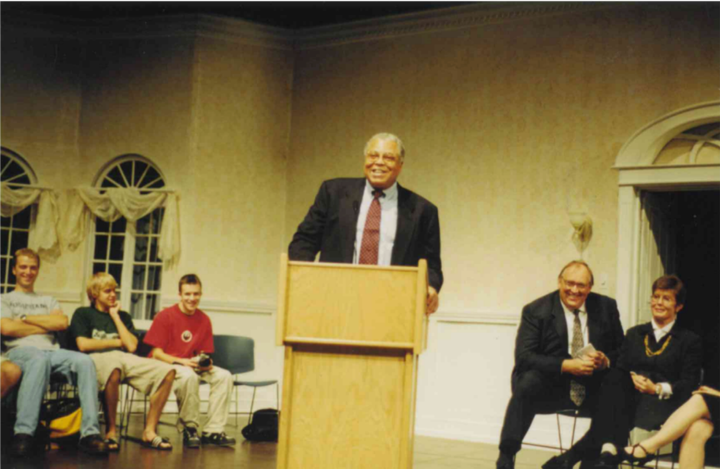New opponents: pro-athletes and politics
National anthem unites a divided country, respects fallen veterans
MIKE SHAFER
mjshafer14@ole.augie.edu
The United States faces danger far greater than one man, greater than Congress or the courts, greater than bombs and engines of war. America faces the division of its people.
This division became especially apparent during the 2016 election and its fallout. Even now, nearly a year after the polls closed, separation runs deep. Protests between the far left and alt-right turn violent, athletes are either championed or condemned for peaceful demonstration and California threatens yet again to secede.
In 2016, when former San Francisco 49ers quarterback Colin Kaepernick took a knee during the national anthem, the country responded with both uproar and praise.
Players met a similar response when dozens of them held demonstrations during national anthems last weekend.
Kaepernick knelt to protest police brutality and oppression of minorities. Players last weekend knelt in response to President Donald Trump’s actions on social media, calling for protesting players to lose their jobs. Both instances suffer from the same issue: the message is not clear.
Traditionally, standing (if one is able) while the national anthem is sung is a sign of respect. Obviously, many Americans treat anything other than that as disrespect.
Kneeling before a football game does not communicate anything other than that disrespect, and it is only until much later, in interviews, that the players are able to communicate what they were trying to say.
However noble the intentions, the action itself says nothing about them.
Pittsburgh Steelers tackle and U.S. Army Ranger veteran, Alejandro Villanueva, was the only Steeler to be seen on the field for the anthem before the game on Sept. 24. According to CNN, the team could not come to a unanimous decision on what to do on the field for the national anthem, so they stayed in the tunnel.
Villanueva told CBS Pittsburgh that he wanted to be near the front of the tunnel so he could see the flag, but he unintentionally stepped out too far and was caught on camera as the only Steelers player standing with his hand on his heart. Villanueva said in the interview that he had no intention of going against the team’s decision or making his teammates look bad. He simply wanted to see the flag. Villanueva has had an incredibly difficult time explaining his simple gesture and restoring the esteem of his team.
The action said one thing and the explanation may have come too little, too late—at least in the case of several viral videos of former Steelers fans burning the team’s merchandise.
Thousands upon thousands of soldiers have fought and died so the United States can remain a free country. So, the football players ought to be able to do whatever they want, right? True—that is what makes America so great. This protest was peaceful, and for that the players should be commended. But there is a time and place for protest. The national anthem ought not be one.
The American flag and national anthem are meant to bring the country together. For a couple of minutes, we sing a song we all know and honor a flag we know so well.
Instead, these players, by using the anthem to protest this way, turned one of the most powerful unifying forces into a line drawn in the sand.
During a time in which the country is already fiercely divided politically and socially, the people of the United States of America desperately need something to unite over. Unfortunately, now even The Star Spangled Banner causes people to take sides.



